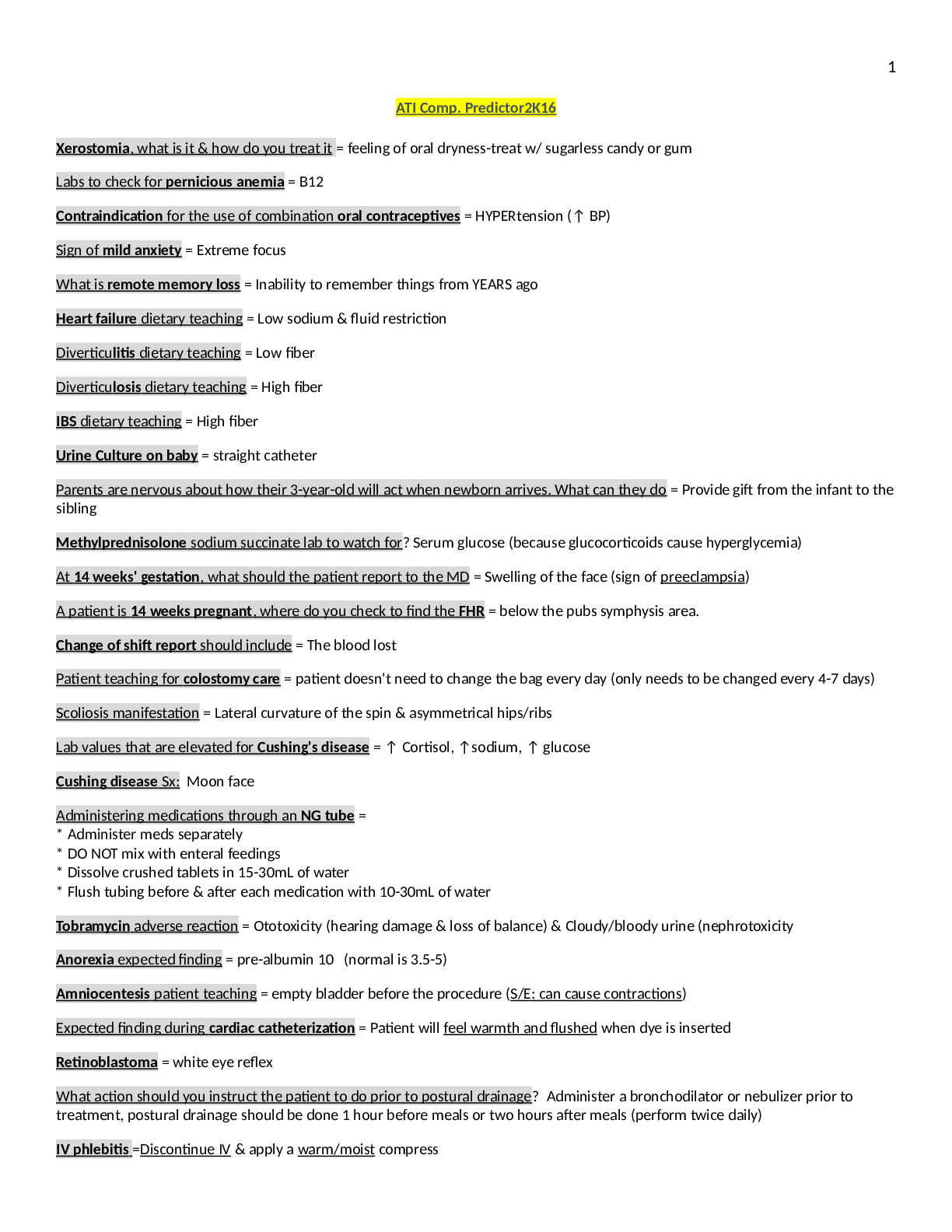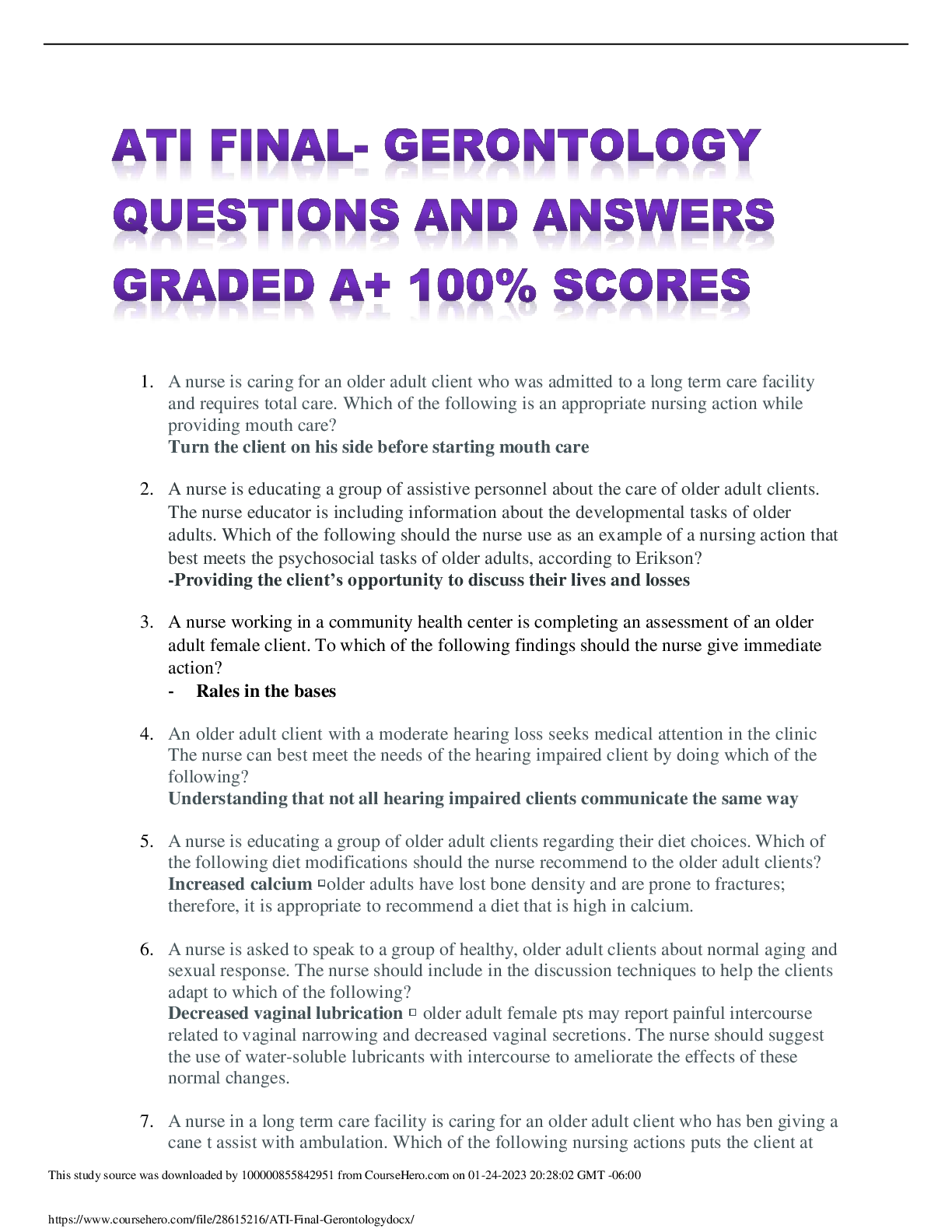FAMILY NP > QUESTIONS and ANSWERS > Family Medicine Board Review questions with correct answers (All)
Family Medicine Board Review questions with correct answers
Document Content and Description Below
A 42-year-old Asian male presents for follow-up of elevated blood pressure. He has no additional chronic medical problems and is otherwise asymptomatic. An examination is significant for a blood pre... ssure of 162/95 mm Hg but is otherwise unremarkable. Laboratory Findings unremarkable Urine microalbumin negative According to the American College of Cardiology/American Heart Association 2017 guidelines, which one of the following would be the most appropriate medication to initiate at this time? A) Clonidine (Catapres), 0.1 mg twice daily B) Hydralazine, 25 mg three times daily C) Lisinopril/hydrochlorothiazide (Zestoretic), 10/12.5 mg daily D) Metoprolol tartrate (Lopressor), 25 mg twice daily E) Triamterene (Dyrenium), 50 mg daily - ✅✅-ANSWER: C This patient has hypertension and according to both JNC 8 and American College of Cardiology/American Heart Association 2017 guidelines, antihypertensive treatment should be initiated. For the general non-African-American population, monotherapy with an ACE inhibitor, an angiotensin receptor blocker, a calcium channel blocker, or a thiazide diuretic would be appropriate for initial management. It is also appropriate to initiate combination antihypertensive therapy as an initial management strategy, although patients should not take an ACE inhibitor and an angiotensin receptor blocker simultaneously. Studies have shown that blood pressure control is achieved faster with the initiation of combination therapy compared to monotherapy, without an increase in morbidity. Lisinopril/hydrochlorothiazide would be an appropriate choice in this patient. -Blockers, vasodilators, -blockers, and potassium-sparing diuretics are not recommended as initial choices for the treatment of hypertension. During rounds at the nursing home, you are informed that there are two residents on the unit with laboratory-confirmed influenza. According to CDC guidelines, who should receive chemoprophylaxis for influenza? A) Only symptomatic residents on the same unit B) Only symptomatic residents in the entire facility C) All asymptomatic residents on the same unit D) All residents of the facility regardless of symptoms E) All staff regardless of symptoms - ✅✅-ANSWER: C In long-term care facilities, an influenza outbreak is defined as two laboratory-confirmed cases of influenza within 72 hours in patients on the same unit. The CDC recommends chemoprophylaxis for all asymptomatic residents of the affected unit. Any resident exhibiting symptoms of influenza should be treated for influenza and not given chemoprophylaxis dosing. Chemoprophylaxis is not recommended for residents of other units unless there are two laboratory-confirmed cases in those units. Facilit [Show More]
Last updated: 5 months ago
Preview 5 out of 100 pages

Loading document previews ...
Buy this document to get the full access instantly
Instant Download Access after purchase
Buy NowInstant download
We Accept:

Reviews( 0 )
$7.00
Can't find what you want? Try our AI powered Search
Document information
Connected school, study & course
About the document
Uploaded On
Feb 01, 2025
Number of pages
100
Written in
Additional information
This document has been written for:
Uploaded
Feb 01, 2025
Downloads
0
Views
15

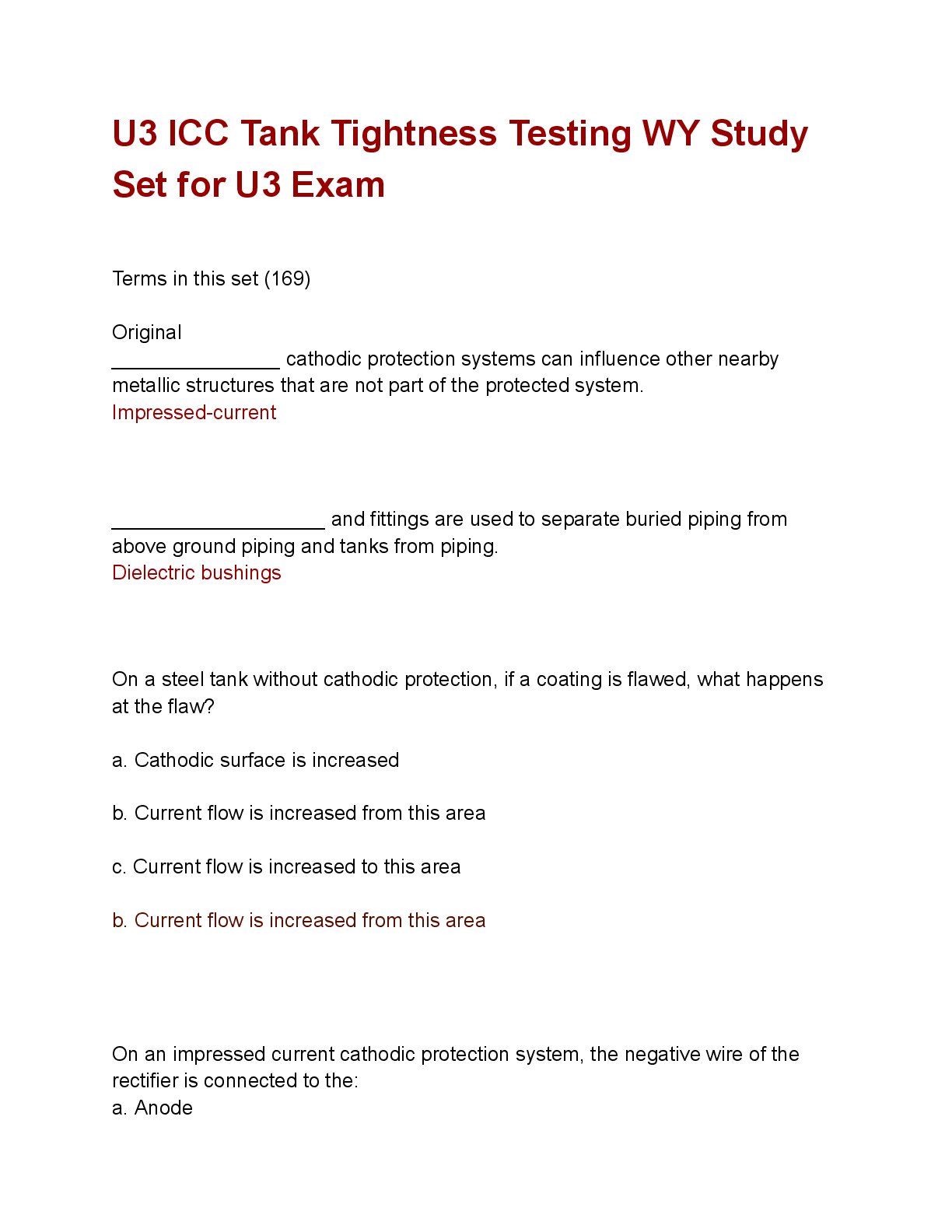
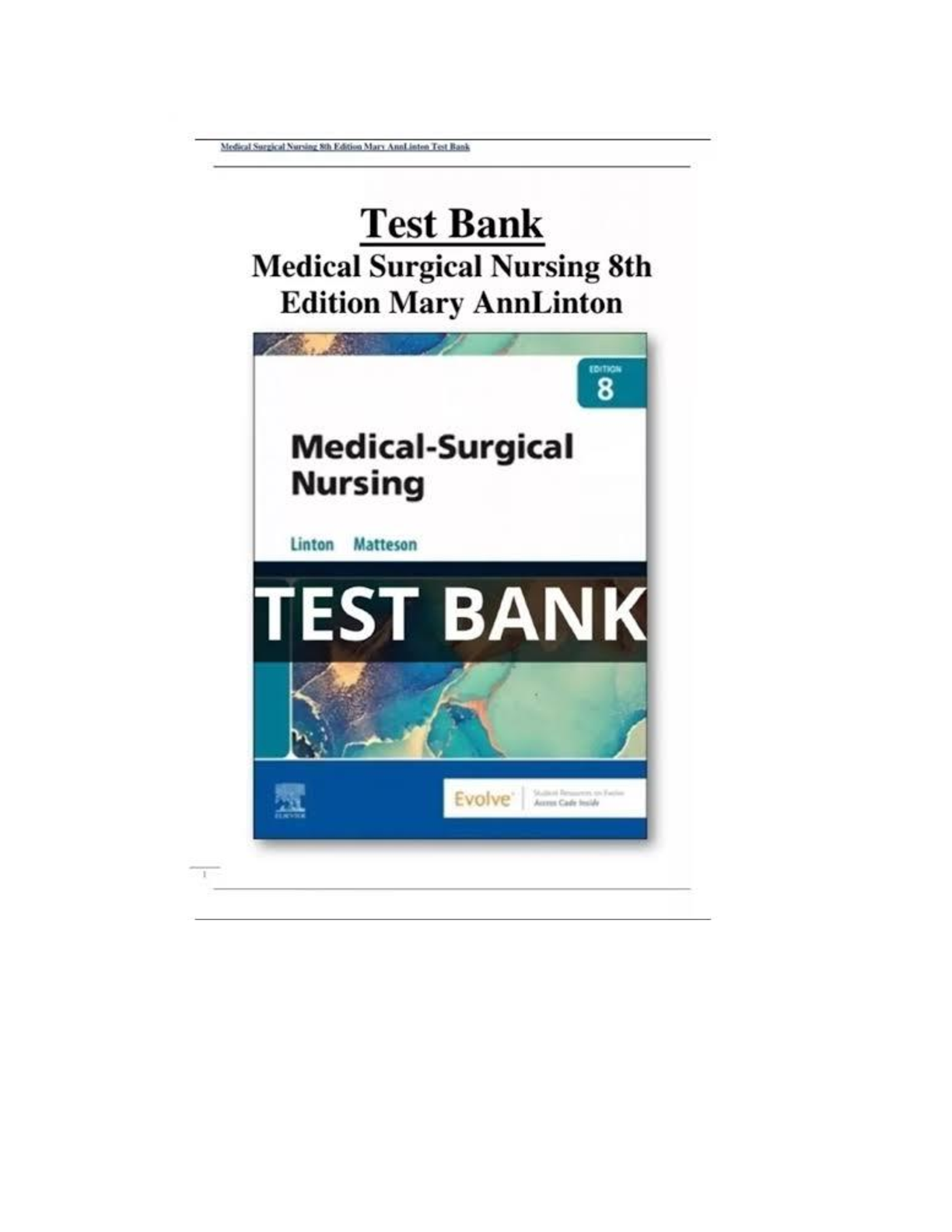
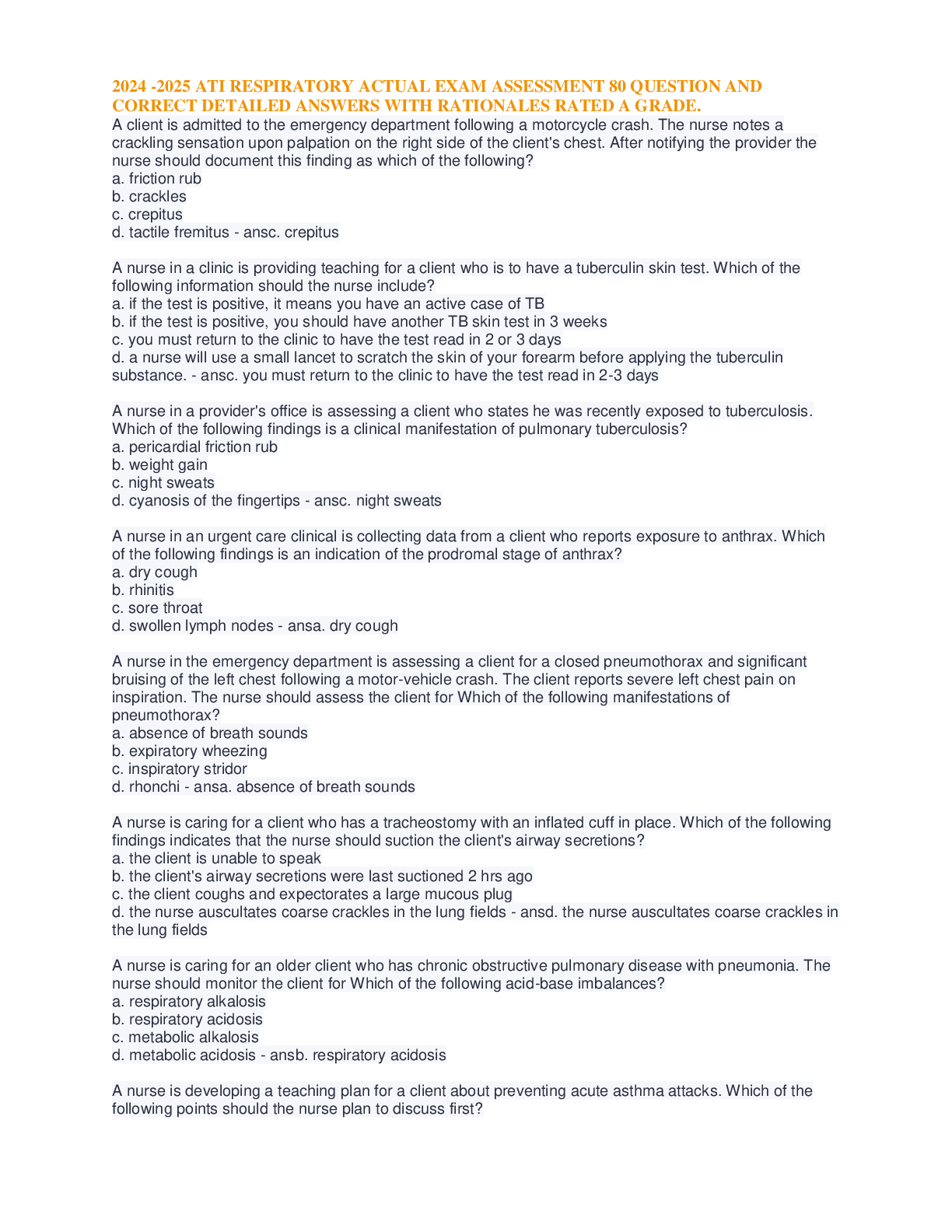
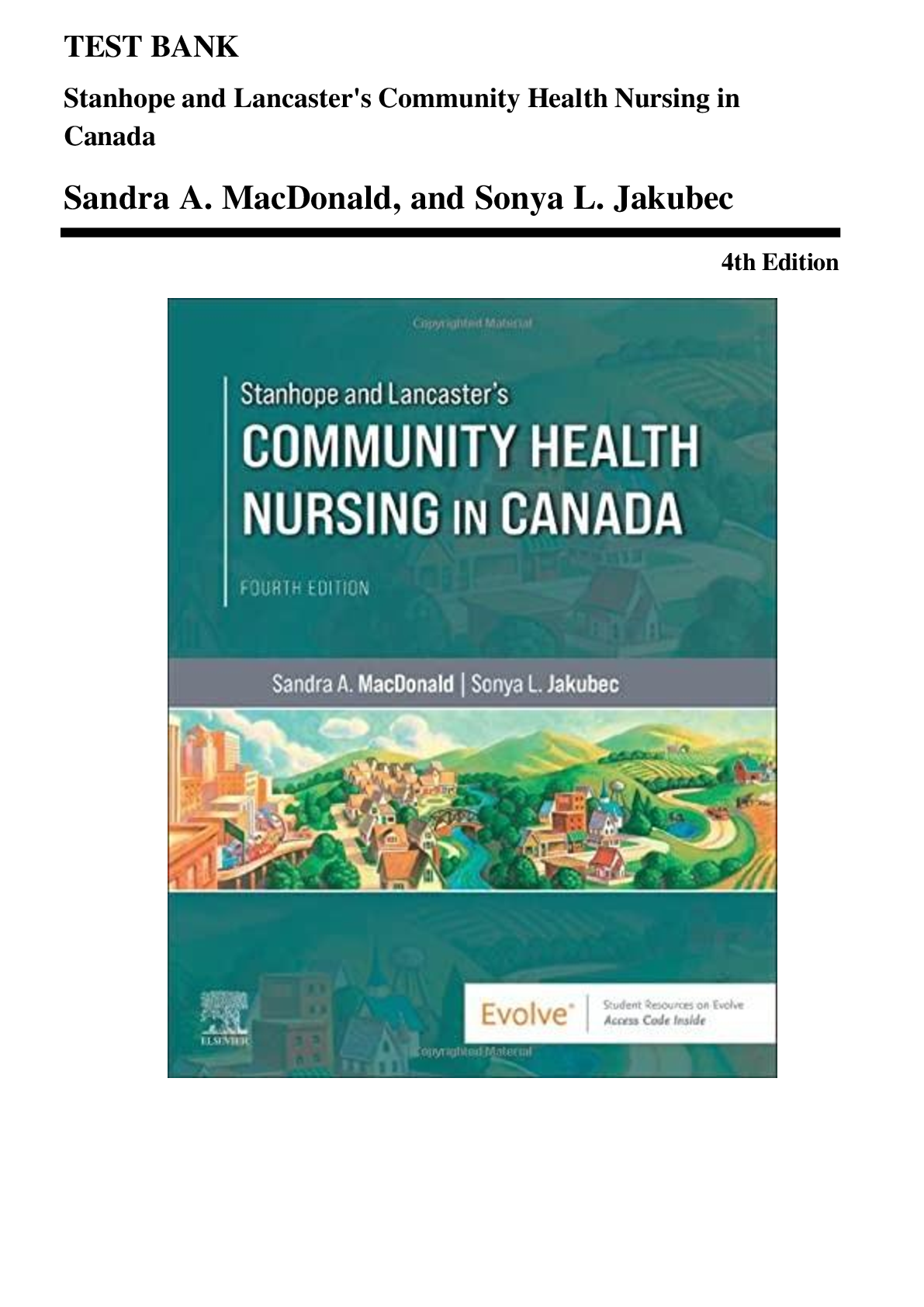
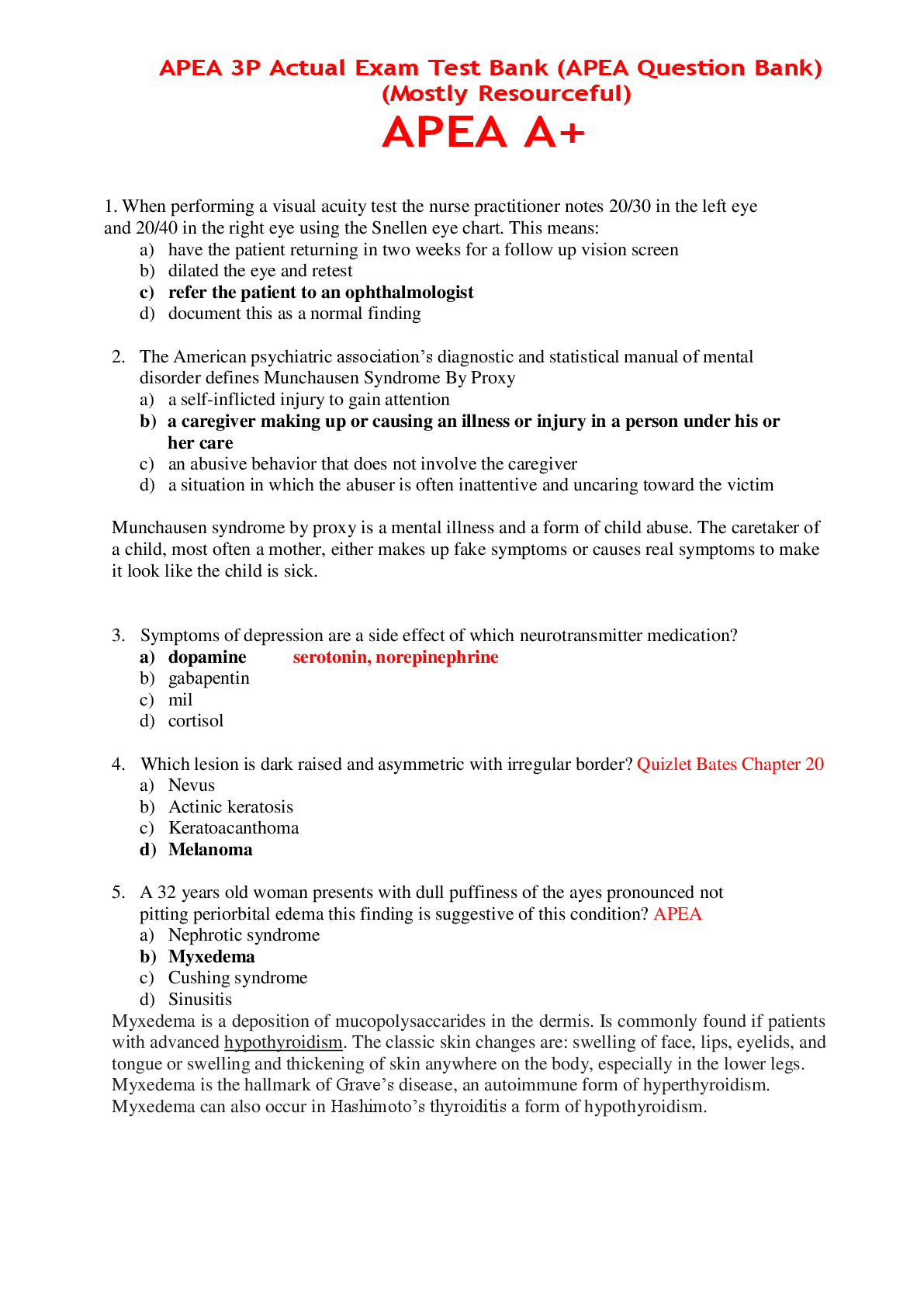
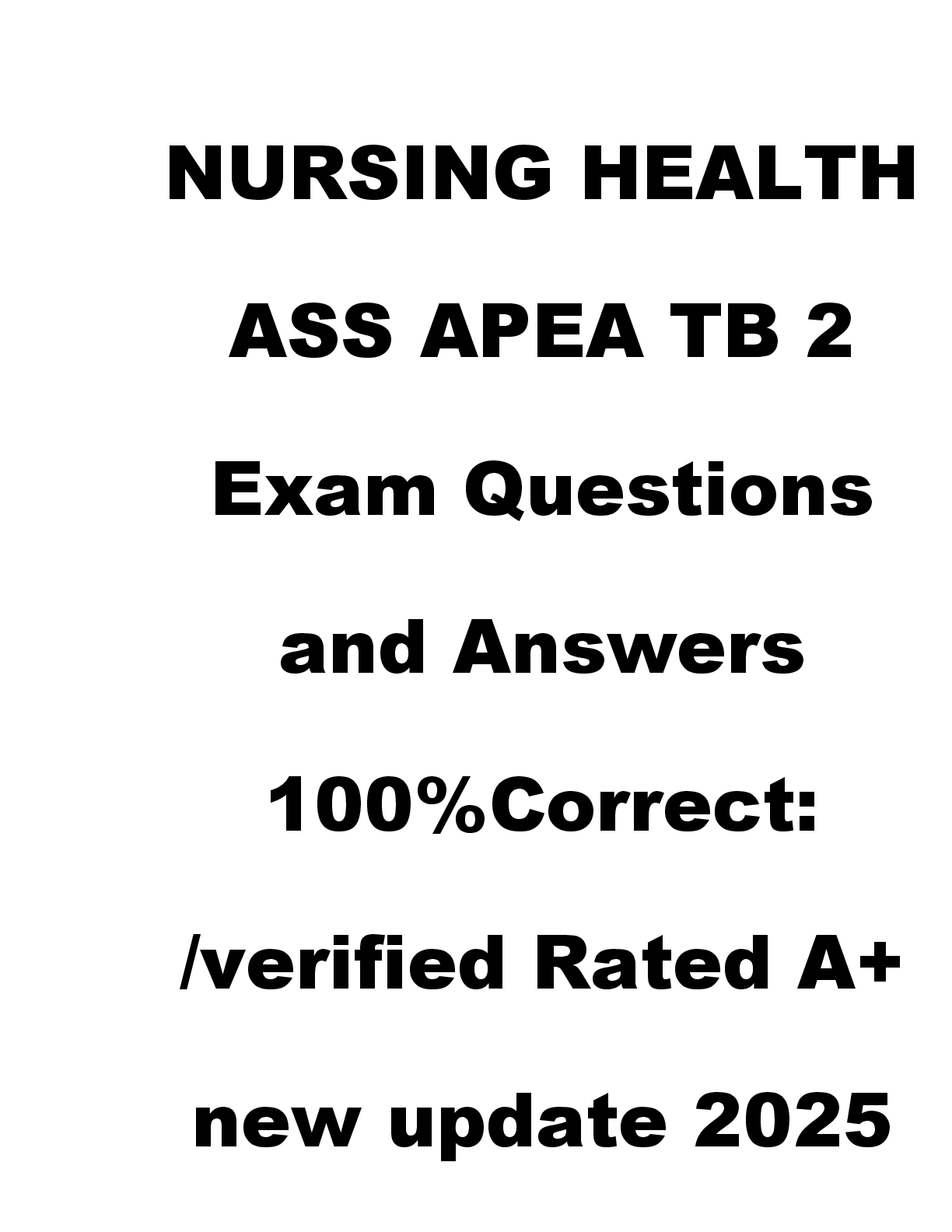

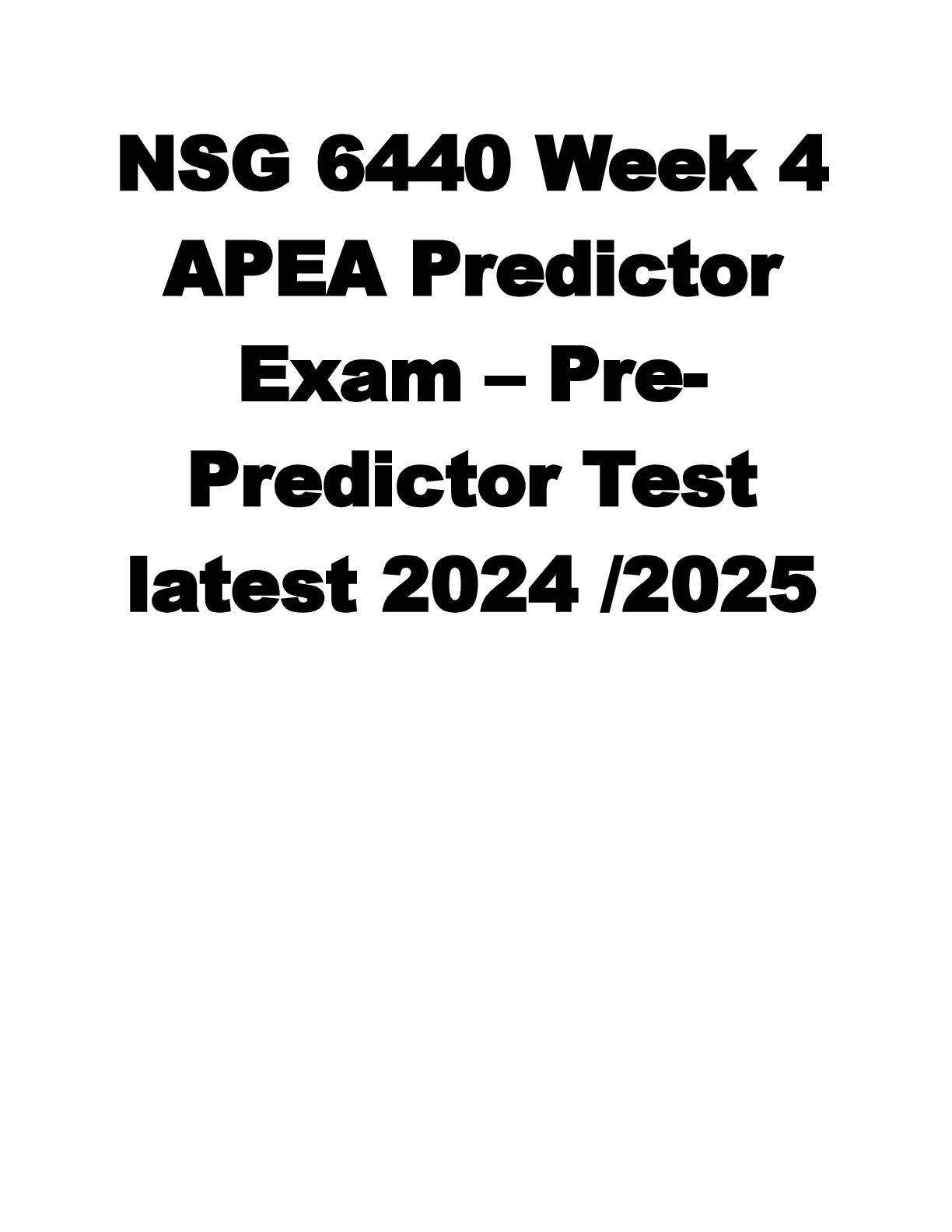
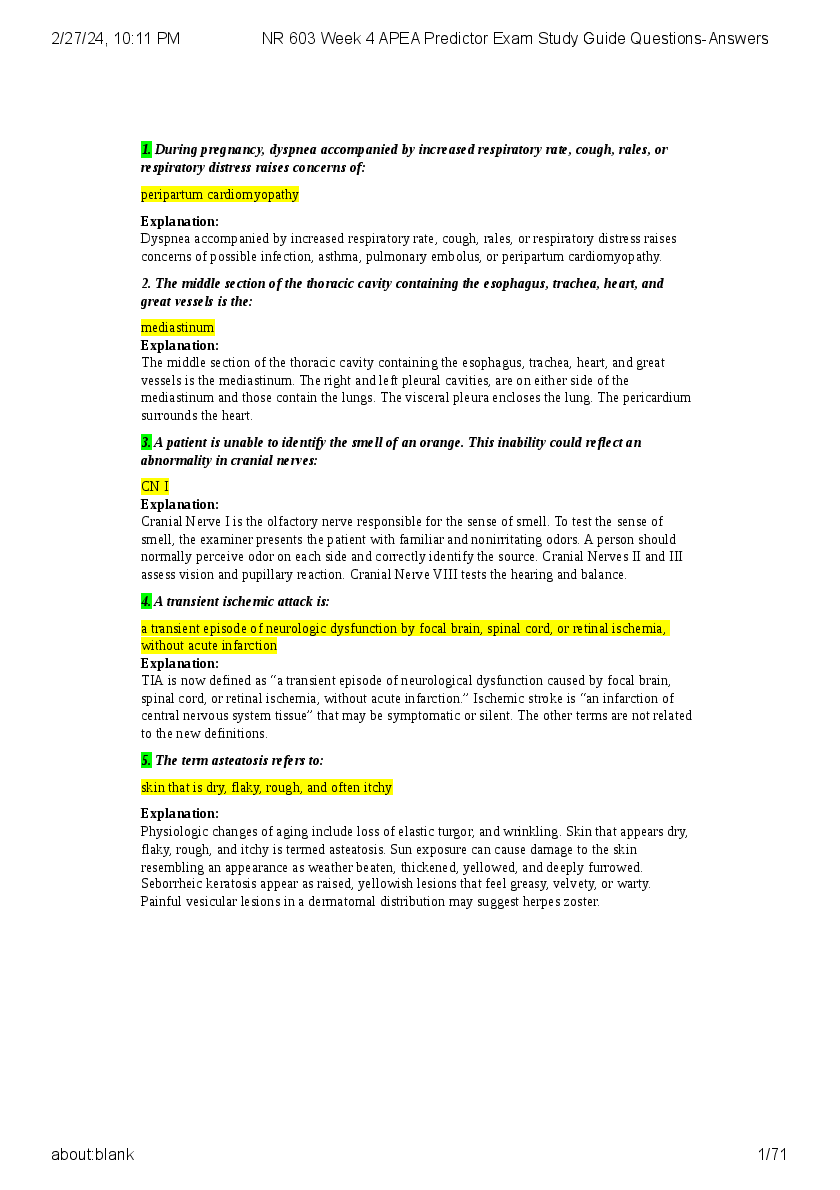
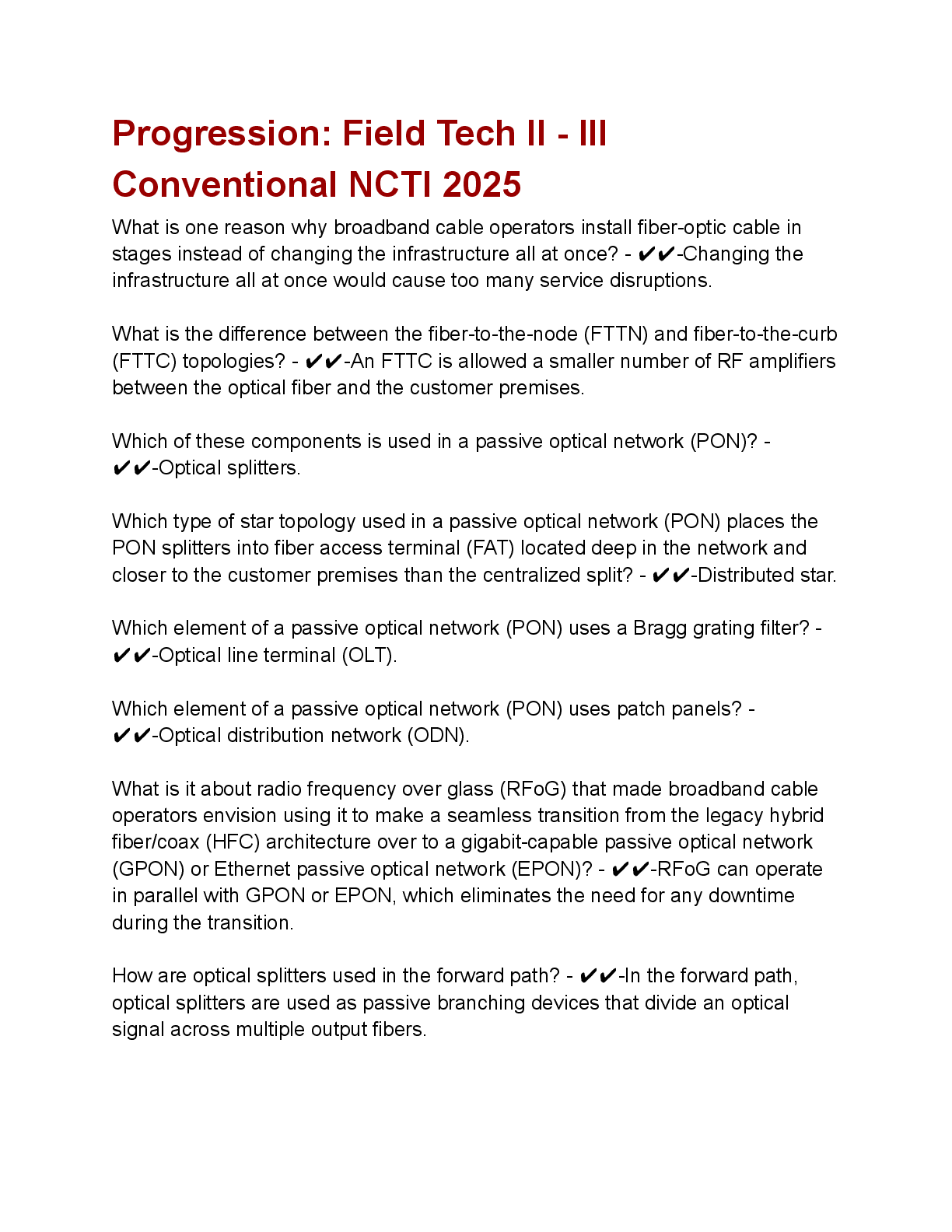
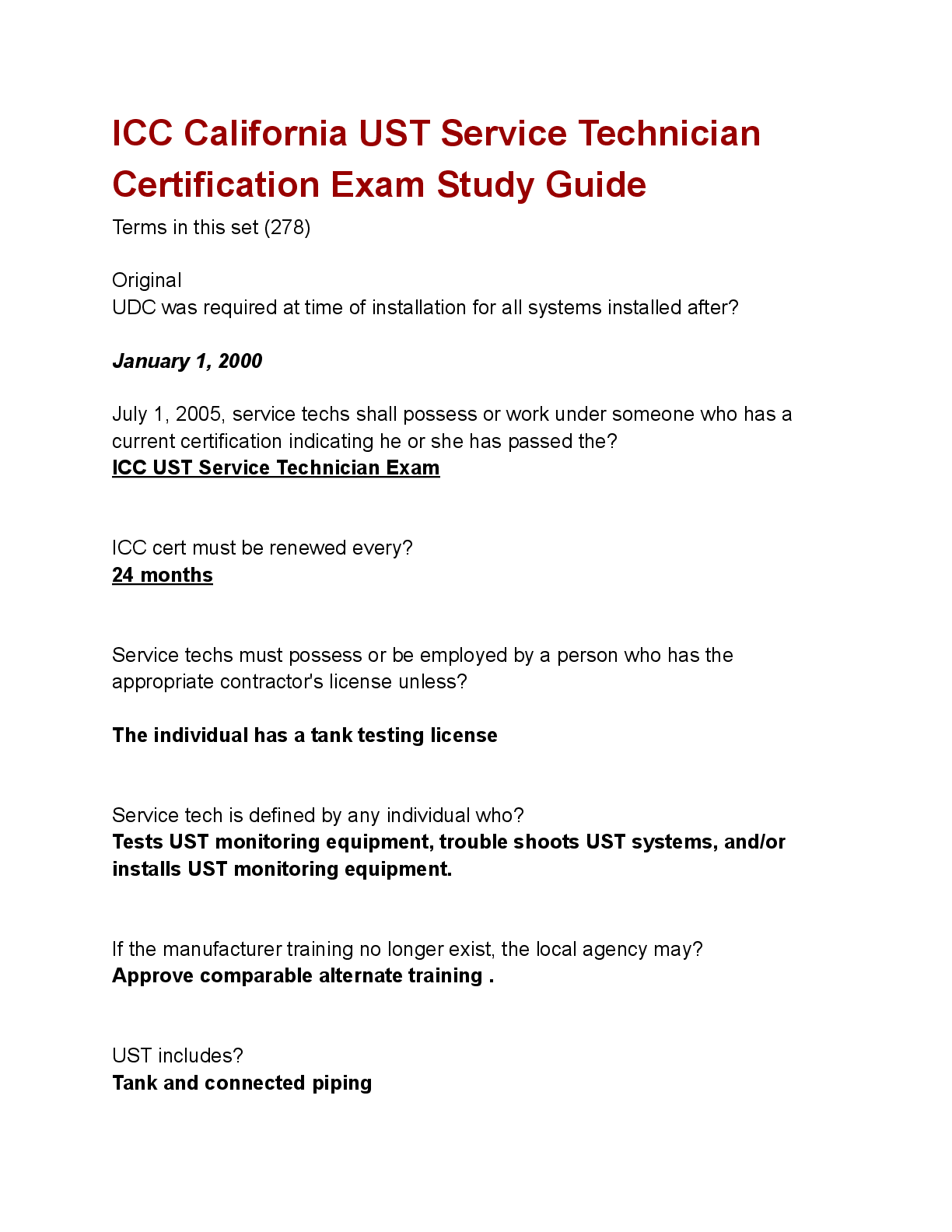
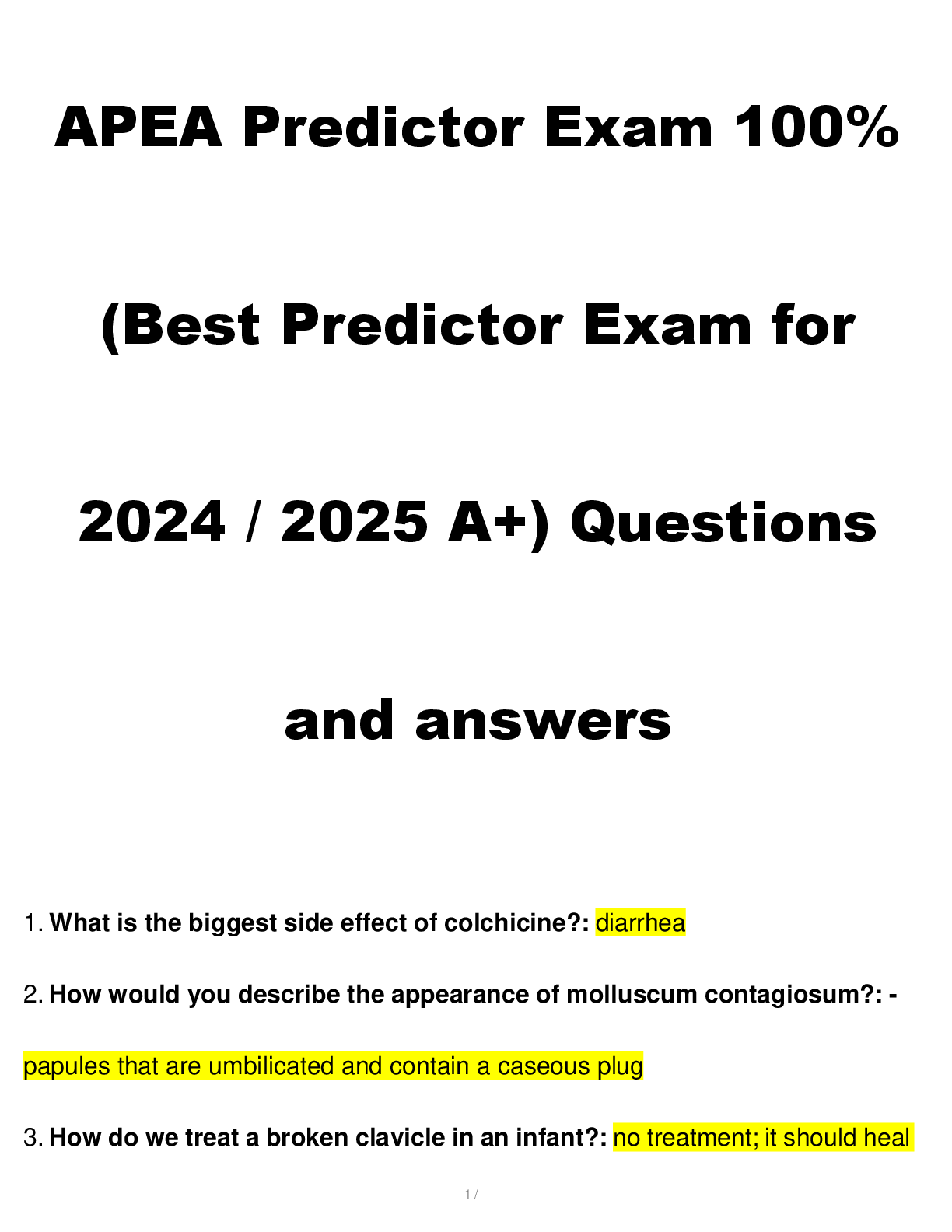

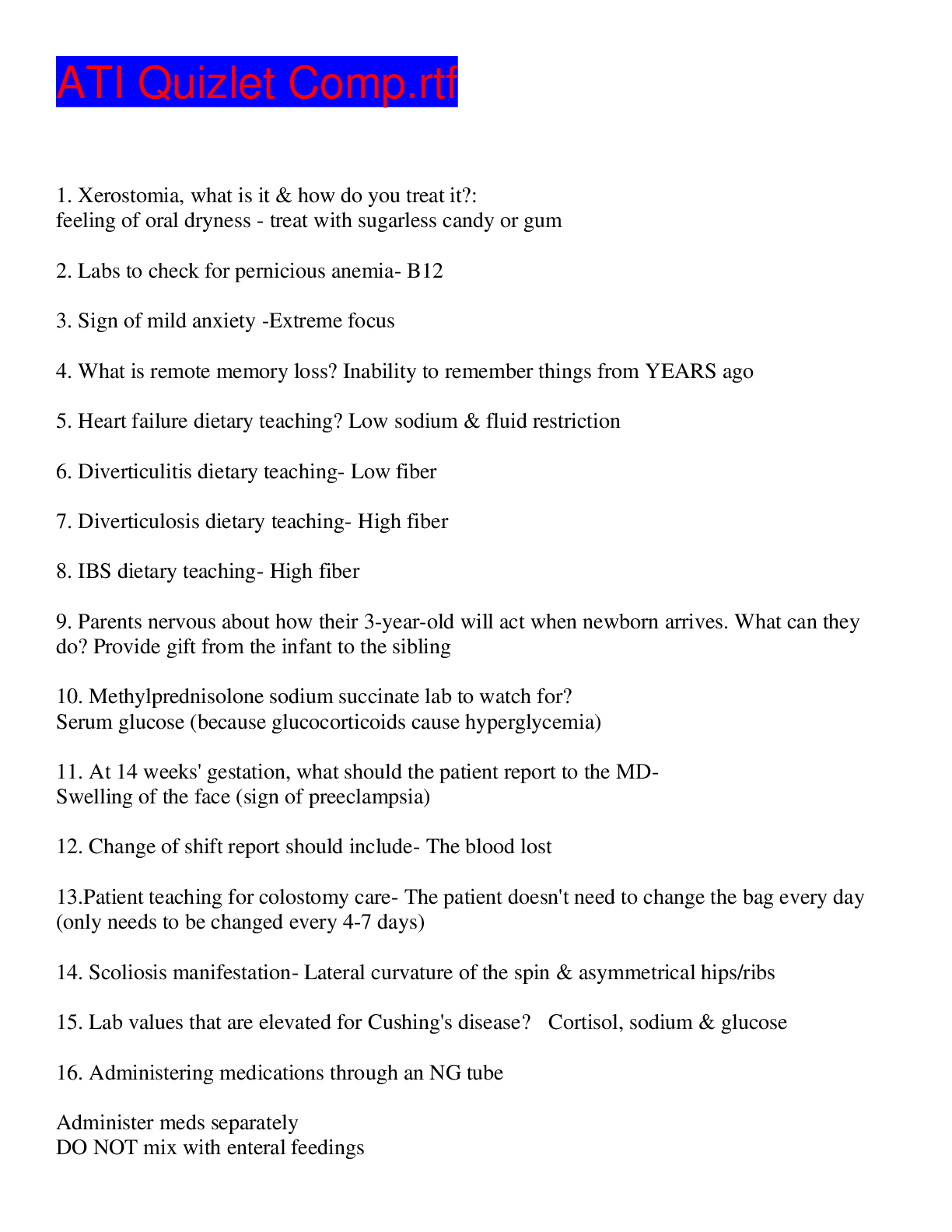
.png)
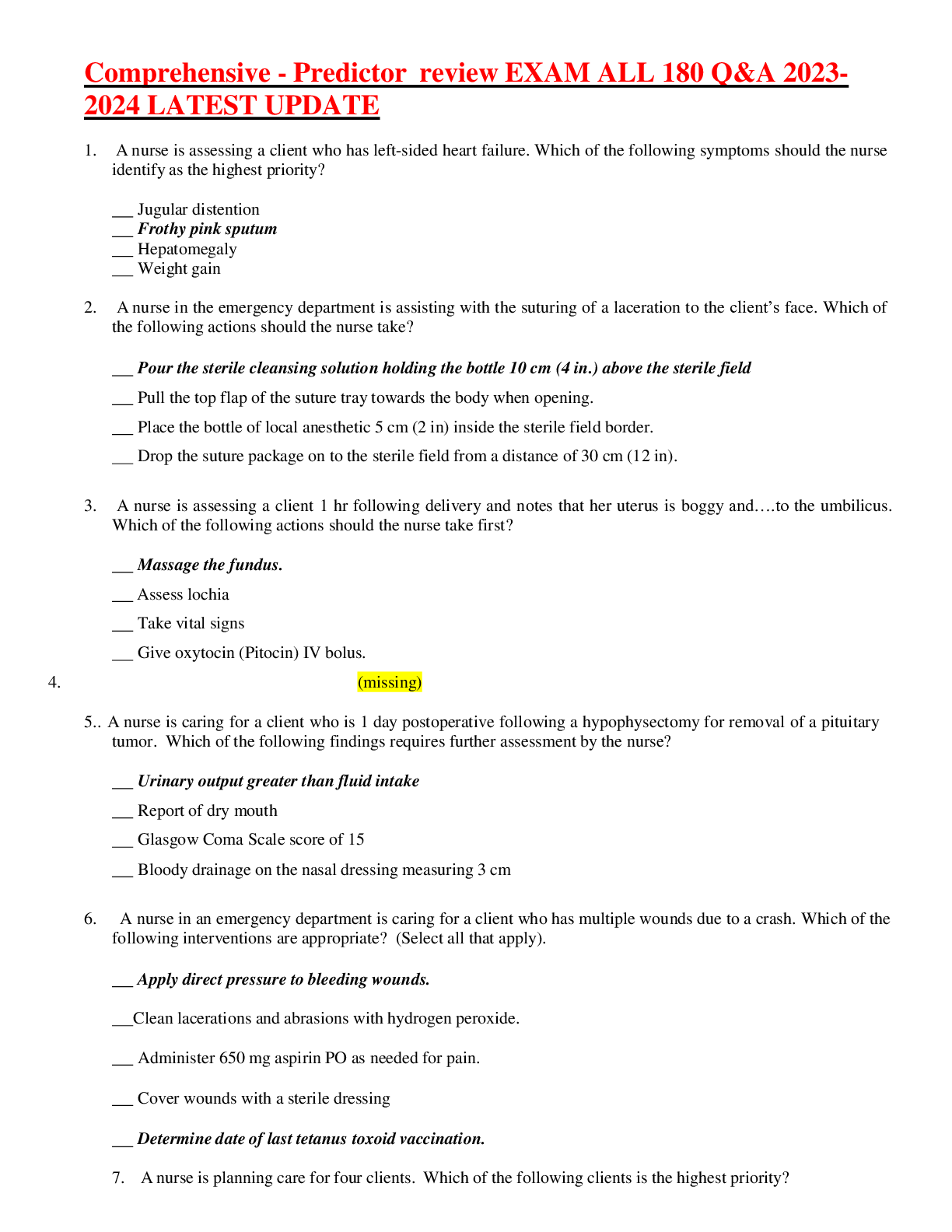

.png)
